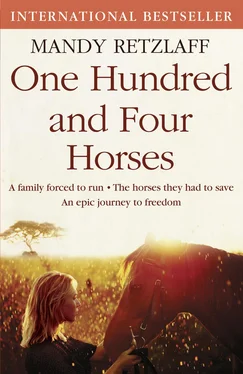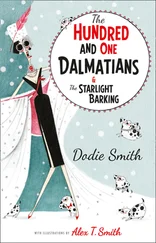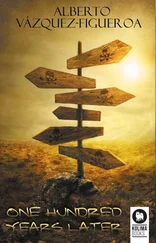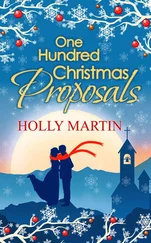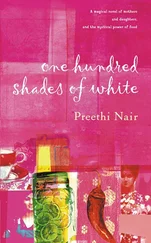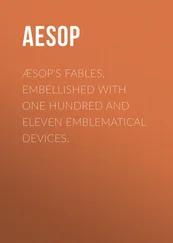I REMEMBER A place that was wild and filled with game. I remember a house with a giant mango tree in the garden and stables out back, where our horses grazed contentedly and waited to be ridden along dusty red tracks that wound their way into the bush. I remember picking up our children from school and driving home with the tsessebe—those powerful antelopes with chestnut hides, spiral horns, and strange, ridged bodies—flocking into the trees alongside us. The farm was called River Ranch, the farmhouse Crofton. The farm’s thick-forested hills and scrubby lowlands were held in the cradle of two rivers; its boundaries were patrolled by elephants tamed and trained to keep away poachers. Its soils held the promise of a new future, and on the day that my husband, Pat, and I took our children there for the very first time, in 1992, we thought it would be home forever.
That day, long ago and yet seemingly so near, we drove north on the Chinhoyi road, through fields of tall maize. Our car was laden with suitcases and packs, saddles and straps, and three squabbling children in the back. In the middle seat, our second son, Jay, was chattering animatedly about the game he might see. If there was one way of sparking the often taciturn Jay to life, it was to talk about the game he might track and hunt at our new home. The kudu, that large African antelope with its striped hide, huge horns, and powerful legs Pat and I had seen when we were first looking over the farm, had been one of the things that propelled us to go to the auction and place a bid; this wild place was where we would spend our lives.
We followed the winding, dusty road and could soon see the farmhouse of Two Tree Hill, the farm that bordered our own, looming above us, with big workshops and a water tank in front. Farther on, we saw the glistening waters of the dam. A herd of the enormous black antelopes known as sable looked curiously at us then turned and sped away, through the wheat and into the cover of the thick bush. Behind us, the truck that was following jarred on patches of uneven road, but the four horses inside were content. This, after all, was to be a new home for them as well.
We reached the farmhouse early in the afternoon, when the midday sun was at its hottest. The building had a broad white facade and a simple roof of corrugated iron. Pat pulled the car around, into the shade of the mango tree, and, even before we had ground to a halt, the children tumbled out.
Paul, our eldest, was fourteen years old, big and broad and the perfect image of his father. Jay, just turned nine, had a mop of wild blond hair that almost hid his searching green eyes. Our youngest, Kate, was three years Jay’s junior, a gorgeous girl who, surrounded by brothers and cousins, was growing up as tough as any of them and gave as good as she got.
“Is this it?” Kate asked.
“Your new home,” I replied. “The farmhouse is called Crofton. What do you think?”
As Paul, Jay, and Kate inched forward to investigate, Pat and I turned our attention to the truck that had followed us onto the farm. Pat undid the latches and let down the ramp. Inside the truck, he ran his hands up and down the four horses’ noses, promising them fresh air, clean water, and more grazing than they could wish for.
Frisky came first, her ears twitching inquisitively. An old skewbald mare, more than twenty years old, she barely needed leading. She simply followed the sound of Pat’s voice. It was the same voice she had been hearing for twenty-two years, since the days when they would race antelopes together at Enkeldoorn (now called Chivhu), where Pat grew up. She was his very first horse, perhaps his very first friend, and I sometimes wondered which one of us was the real love of Pat’s life.
After Frisky came her foal Mini, a bay mare with a wild temperament who had produced some very special foals. Once they were out, they turned to survey their new surroundings, while the other two horses, Sunny and Toffee, lingered in the shade of the horse trailer, unsure if they too should emerge.
While the children were looking up at the face of their new house, Pat ran his hands along Frisky’s flank and listened to her responsive snort. His old friend took a few steps forward and dropped her head to start pulling the strange new grass between her teeth. When next she looked up, her nostrils twitched and she rolled her eyes.
This will do , she seemed to be saying. If you say so, Patrick, this will do .
When I look back now, moving to Crofton was a new beginning. Crofton was a place in which we wanted to invest the whole of our lives. We were to be surrounded by rugged, virgin bush, and we had set our sights on opening up and forging a productive farm, one that we might one day hand down to our children. It would be a place for the generations to come, and Pat and I would found it while our children had the most amazing childhood they could, running wild in our beautiful Zimbabwe.
I did not know that nine years later, our world here at Crofton would end.
I had met Pat in 1976, when he was studying at the University of Natal in Pietermaritzburg, South Africa. I had not met many Rhodesians before, having been born in Ghana and brought up in South Africa, but as soon as I met him I knew that he was the man for me. I had taken temporary work as a barmaid at a hotel popular with the university’s students. Although I had never been to university myself, student life had become my life. My nights were filled with raucous laughter and parties, and I had become part of a big circle of friends, all of whom were studying at the university. Every year, the university held a fund-raiser they called Rag Day. On Rag Day, the students would build huge floats. Vast figures would be cast in plaster of paris, and garlands of flowers would cover trailers and cars. The students would climb on top of the floats and the procession would move along the streets of Pietermaritzburg, while we would all collect loose change for charities.
On Rag Day of 1976, I clambered onto one of the floats and headed off with the other students. As the floats lumbered along, we leaped on and off, proffering our tins, and the crowds in the street cheered wildly as each float passed by.
From somewhere in the crowd, I heard somebody calling my name. Standing, pressed between two other students, was a good friend from the university called Charlie Bender. He had caught sight of me on the float and was trying to attract my attention. When I spotted Charlie I waved back enthusiastically.
I did not notice Charlie’s tall friend who was standing beside him. His name, I would later find out, was Patrick Hugo Retzlaff. It was much later in our relationship that I found out that Patrick had nudged Charlie and asked him who the waving girl was. When Charlie told him my name, Pat said, “Well, that is the girl I am going to marry. I have had a strange premonition.”
Some months later, I was introduced to Pat for the first time. In the crowded hallway of a mutual friend’s house party, we talked long into the night. As he told me about Rhodesia and his studies in animal science, he was, I decided, incredibly good-looking. Much taller than me, he had short-cropped hair and a fuzz of beard along the line of a deep-set jaw. At nineteen he was two years my junior. He had a delightful sense of humor that made me laugh out loud. As we parted ways that night, the party thinning out as dawn approached, he invited me to a birthday party the following week. I made no hesitation in saying yes and hurried out of the door before he could change his mind.
On the day of the party, Pat picked me up at the hotel lobby. When he arrived, I was in my room upstairs, blow-drying my hair. I checked myself in the mirror—I had spent two years living in London and I considered myself something of a fashionista—and, when I was satisfied, went down to meet him.
Читать дальше
